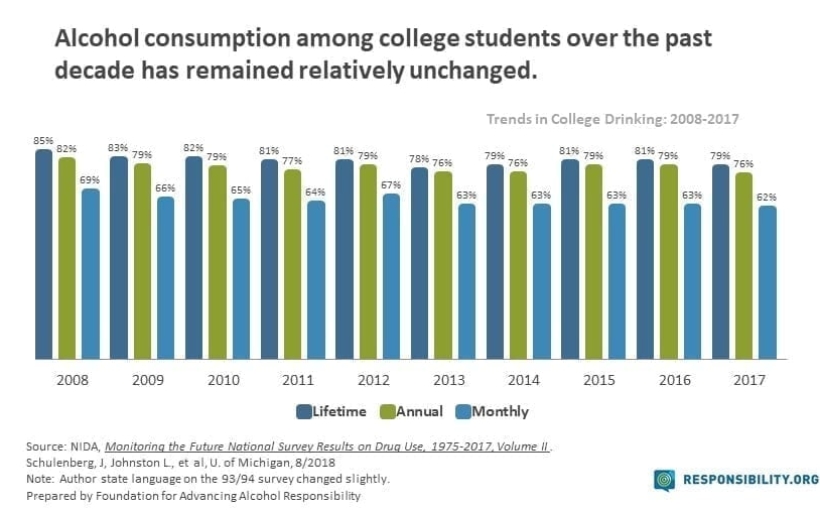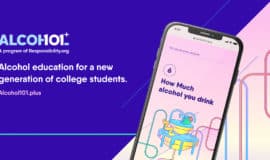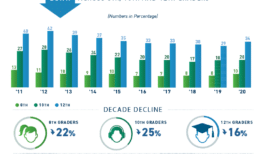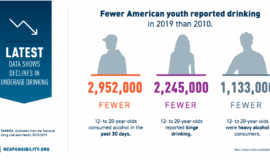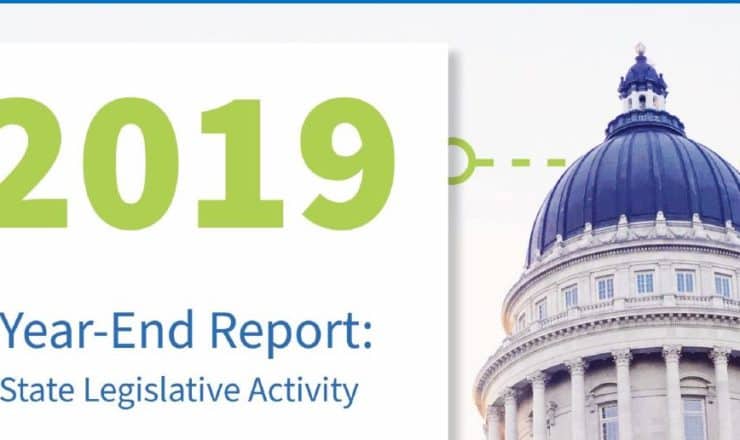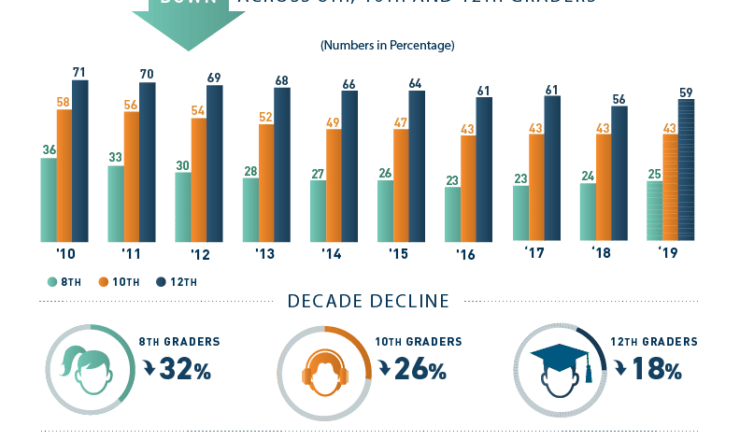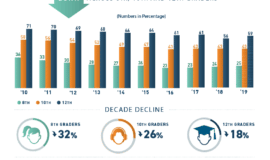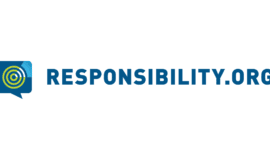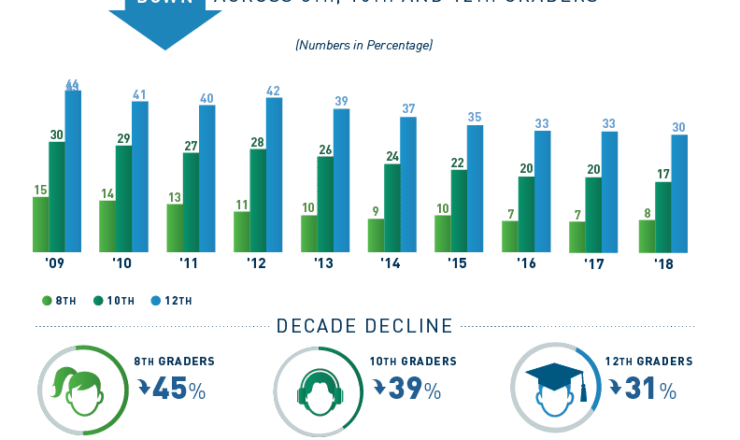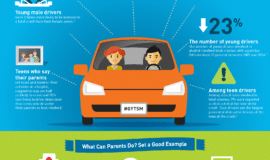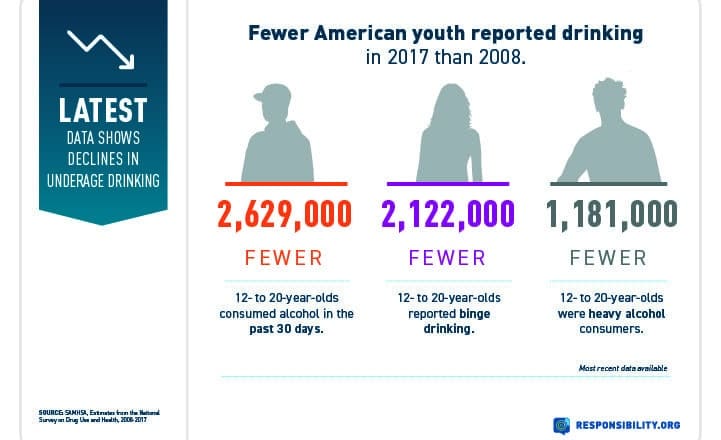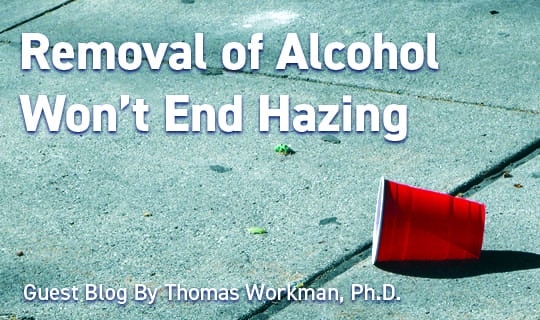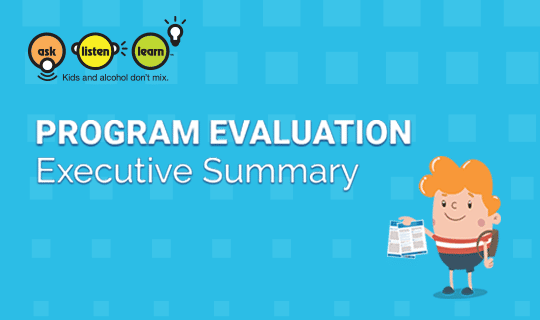College Binge Drinking Rates Continue to Decline in 2017
The 2017 Monitoring the Future Report – Volume II was just released and illustrates a continued, steady decline in college alcohol consumption. In fact, the decline reached historic low levels on the measurements of daily and lifetime alcohol consumption, and the number of students reporting they had been drunk in the past month. Additionally, the report found two-thirds of college students are not binge drinking.
According to the study, occasions of heavy drinking (or binge drinking as defined as five or more drinks in a row at least once in the past two weeks) among college students remained relatively unchanged from 2016 to 2017, increasing 0.3 percent from 32.4 percent 2016 to 32.7 percent in 2017. However, they have decreased 24 percent proportionally since 1991 (from 43 percent percent to 33 percent) and decreased 18 percent over the past decade.
College-age young adults continue to stand out for having relatively high levels of extreme binge drinking (defined as having 10 or more drinks in a row and having 15 or more drinks in a row in the past two weeks). Combined data from 2005 to 2017 revealed 12 percent of college students reported having 10 or more drinks in a row, and only 4 percent reported consuming 15 or more drinks in a row at least one in the past two weeks.
Alcohol consumption among college students differs substantially by gender, and these differences tend to be the largest at higher frequency levels, with college males drinking more than their female peers. Males were three times more likely to report extreme levels of binge drinking (10 or more drinks) than their female peers (21 percent of college males compared to 7 percent of college females) and were more than five times more likely to have consumed 15 or more drinks in a row (8.5 percent and 1.6 percent, respectively).
Despite strong parental involvement, public awareness campaigns, and the 21 year old legal drinking age, binge drinking and extreme levels of consumption still occurs among both of-age and underage students on campuses across the country. Parents are the leading influence in a teen’s decision to drink; conversations about the dangers of underage drinking should be ongoing in grade school through high school graduation. As students prepare to head to campus for the fall semester, either as a first time student or third or fourth years, it is critical for college students and parents to understand and discuss the dangerous consequences of overconsumption. These conversations should continue into the winter and throughout the entire school year.
Parents of college students are invited to find tips on ways to revive the conversation at Parents, You’re Not Done Yet. Parents and college students are invited to visit our Virtual Bar to learn how alcohol affects an individual’s BAC based on factors such as weight, gender, food, type of drink, etc.
(Source: University of Michigan, Monitoring the Future, 1975-2017: Volume II, College Students and Adults Ages 19-50, 8/2018)

